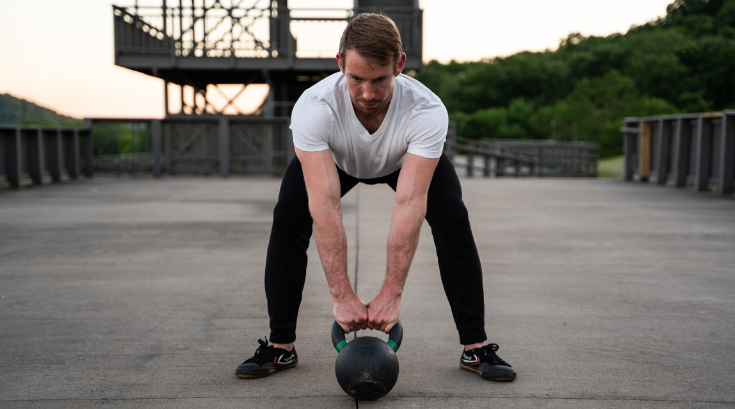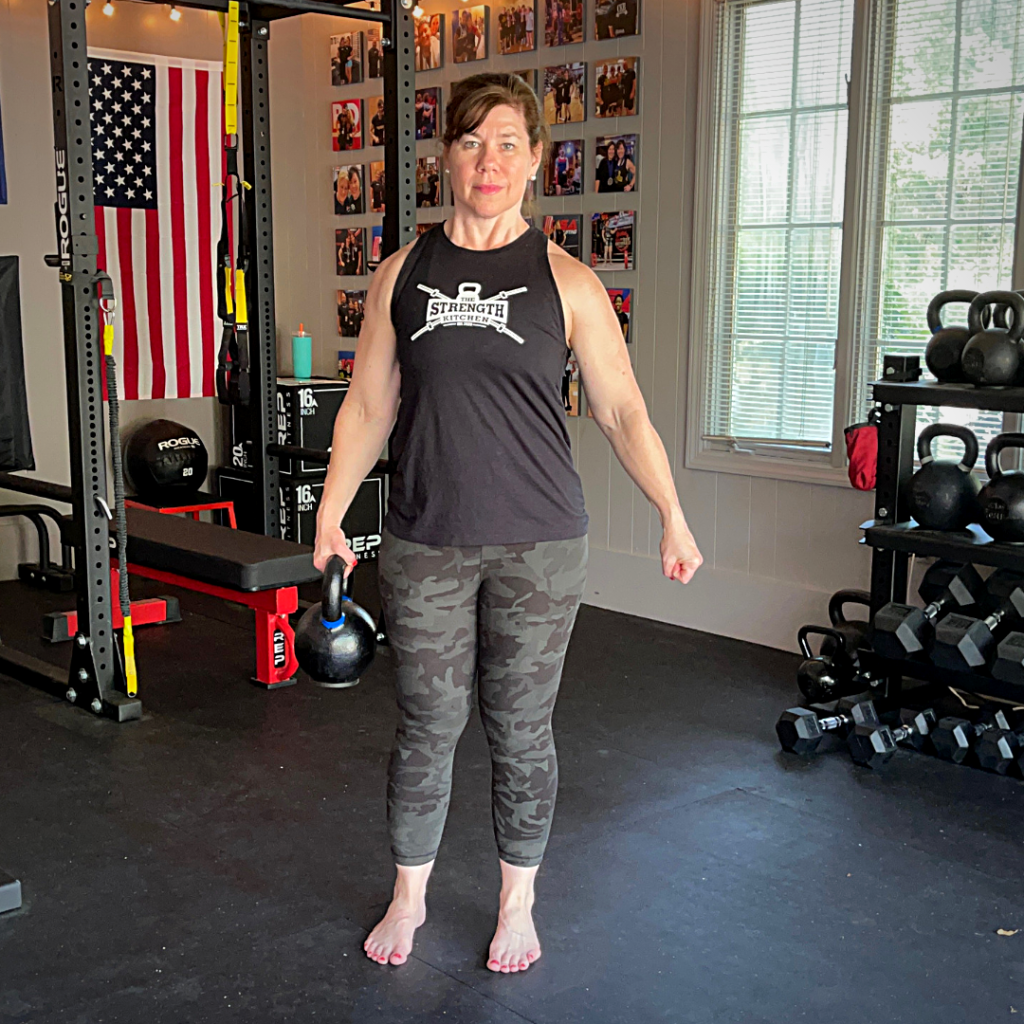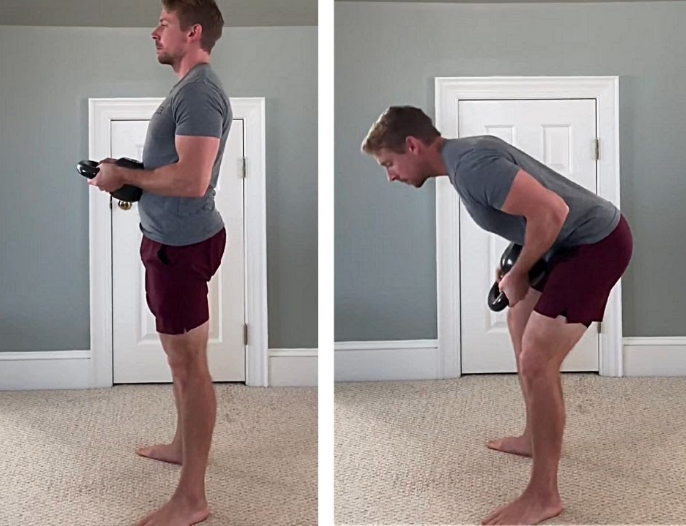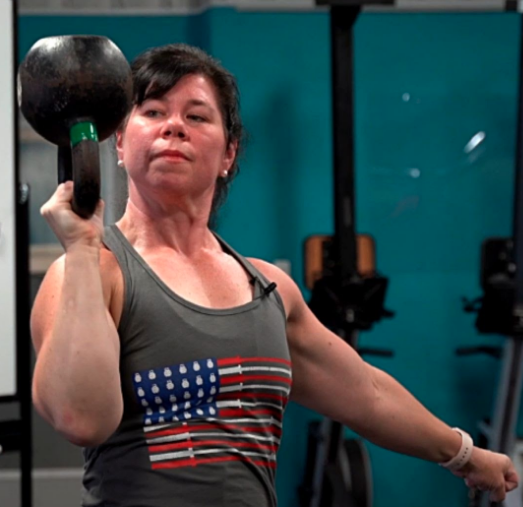
Kettlebell training is a skill.
Every skill – from music to math to sports – contains within it a set of fundamental ideas that demand consistent practice in order to attain mastery. We call those ideas “the basics.”
Skip the basics and you’re walking on shaky ground. Doomed to the amateur level.
When it comes to kettlebell workouts, many lifters jump right into fancy exercises with no regard for developing the basics… and it shows.
I blame fitness gurus and Instagram trainers but that’s another story.
Even popular books and articles written by trustworthy authors are guilty of glossing over many of the foundational skills and drills that would shorten a beginner’s learning curve.
Swings and get-ups are the most popular of the basic kettlebell exercises, but there are many beginner-friendly moves that build strength and specific kettlebell technique that need some attention first.
You want to get the most out of your kettlebell and be confident you’re using it correctly. Try these 5 simple exercises that are fun, easy to learn, and will set you up for future success with more advanced moves.
The Kettlebell Suitcase Carry
The first exercise might seem too simple… at first.
Just hold a kettlebell in one hand, by your side, and walk around or march in place.
But what are you actually accomplishing?
A few things.
First – you’re just getting used to the weight of the kettlebell. For new lifters, this is like a form of exposure therapy. You’re also practicing strong upright posture, breathing, core bracing, and grip strength… all while under load.
Think of the suitcase carry like a standing side plank. Because the weight is only on one side, you’ll build anti-rotation core stability and get the chance to feel out left/right imbalances in a low-risk movement.
The suitcase carry is a classic core and oblique builder and, with the right intention, can help you find your lats as well.
Standing upright, with mid-foot balance (with one or two kettlebells), is my new favorite way to begin teaching the swing. As a form of top-down learning, we get used to the top lockout first – how does it feel to stand tall and balanced as the body becomes fatigued, shaky, or otherwise distracted by a heavy weight in your hands?
Other benefits are obvious – the very first step in any workout is to pick the darn kettlebell up and move it to where you want it. Moving a weight from here to there is all we’re doing.
Putting your weights away is Gym Etiquette 101. Not only is it the right thing to do, it also gives you a bonus core workout.
So, this is where we start – pick up a kettlebell, keep a tall posture, and start walking.
Tips and variations – Walk VERY slow, drive the knees high, march in place (with one or both eyes closed), walk up stairs, keep the face/neck relaxed.
Goal – 1 minute carry each side. Men – 32kg / Women – 24kg.
Belly Hinge
One of the toughest jobs a trainer has is teaching the hip hinge to a new client. Especially one with little-to-no athletic background, or who sits too much, or has suffered poor coaching in the past.
So, pretty much everybody.
Finding the hip hinge “sweet spot” (the right amount of hip and knee bend) unlocks the true power of the body and is why the kettlebell swing is such a great exercise – it’s all hip hinge power. Nail this hinge position, and everything becomes stronger and safer.
But how do we get there?
Jumping right into swings too often leads to a sore back, so let’s start with some foundational position work.
Coaches often give so many cues when teaching a new exercise, they overload clients with too much to think about. We can talk technique all day, but you need to feel the movement, not just logically understand it.
For many, this hip hinge drill does the trick:
Grab a kettlebell by the horns, and push it into your belly, just above the navel. Hinge back with soft knees, feet turned slightly out. As your torso comes down towards horizontal, drive the elbows back (like a row), squeeze the shoulders down and back, and brace the abs against the bell. You’ll feel a good stretch in the hamstrings.
Because the bell is held close to your center, you don’t have to worry about the “path” of the weight. It goes where you go. Focus on core and back tightness and finish with a strong glute squeeze at the top.
This exercise is, basically, a kettlebell swing slowed down.
Use lighter weights (8-16 kg) to pattern the movement – you don’t want the arms struggling here.
Goal – 10 reps with a good hamstring stretch and glute engagement.
Drag Deadlift
The deadlift is a foundational exercise in anyone’s workout program. When it comes to kettlebell training, there is a special deadlift variation that is particularly useful.
The traditional deadlift moves a weight vertically – straight up and straight down… and that’s how we lift super heavy weight safely (the deadlift typically allows you to lift the most weight physically possible)…
But the swing is a horizontal pattern – the bell travels forward and back and thus, you need a slightly different intention for the swing compared to the deadlift.
The drag deadlift adds this touch of horizontal movement.
Set up an arm’s-length away from the kettlebell.
Using the lats and triceps, slowly drag the bell under your hips and stand up. This simultaneous “pull” with the lats and “push” with the triceps strengthens the hip hinge setup and will take your kettlebell swing power to the next level.
For bonus, you can lift and float the bell a few inches off the ground after the drag. This isometric hold really solidifies the swing/deadlift set-up.
Goal – 5 reps. Men – 32kg / Women – 24kg.
Power Clean + Squat
Now that we’ve got the hip hinge dialed in (yes, it’s that important) and your posterior chain fired up, let’s amp things up with a dynamic combo exercise.
You’re going to use that hip power to launch a kettlebell off the floor and catch it at chest height. This “ballistic” lift is paired with a slow “grind” lift – the goblet squat.
Start in the standard deadlift position – stand over the kettlebell and stretch back into the hamstrings. Lift faster than a typical deadlift, increasing speed as you approach lockout. Keeping the lats tight but grip semi-loose is key here.
As the legs and hips straighten out, transfer the momentum into the arms and whip the bell up. Bend the elbows to keep the kettlebell close to your torso and quickly move your grip from the top of the handle to the sides (the “horns”). Pause for a second to make sure your grip is secure and you’re engaged through the whole body.
From there, simply descend into a squat, holding the kettlebell out in front of the chest, until the elbows make contact with the inside of the knees. Pause for second or two and stand up.
The combo of fast, dynamic movement and slow, controlled lifting is a trademark of good kettlebell training and the secret to building strength and sculpting a lean physique at the same time.
Goal – 10 reps. Men – 24 kg / Women – 16 kg
Bottoms-up Clean + Carry
The design of the kettlebell offers a truly unique way to train the shoulders and core. When held upside-down (“bottoms-up”), the bell’s center of mass is perched high above your hand.
This balancing act forces your grip, arms, shoulders, rotator cuff, and core to fire in coordination to stabilize the bell. In short, using the kettlebell bottoms-up is one of the best ways to build functional strength.
Start by gripping the kettlebell handle aligned perpendicular to the body. Here’s a tip to be sure your grip is correct – lean forward on the handle as if you were going to perform push-ups. Your wrist and forearm should feel stacked and secure.
Grip tight, hike the bell into a backswing, and stand up, bringing the bell up to the shoulder in the bottoms-up position. Use your free hand to guide the weight and prevent it from falling or crashing into your shoulder or face.
Once you’re comfortable cleaning the kettlebell bottoms-up and holding it steady, add dynamic movement with the lower body to amp up the challenge for the core and balance.
Start by marching in place, slowly bringing the knees higher as your balance allows. Turn the march into a carry by simply walking around with the weight.
The bottoms-up clean + carry is one of my favorite exercises because not only are you working your entire body, you’re also practicing a valuable strength skill – holding isometric tension with one part of the body while dynamically moving with the other.
Goal – 30s carry each side. Men – 16 kg / Women – 12 kg.
These are a few of the low-risk, high-yield exercises I use to quickly get new clients moving safely with a kettlebell.
Every exercise you do should have a purpose behind it.
Each of these moves is a great exercise in its own right and will develop the physical skills you’ll need as you progress with your kettlebell training.
Want more?
Check out my new kettlebell ebook and training course:
Kettlebell Foundations | The Step-By-Step Beginner’s Guide to Kettlebell Training
I’ve been training real people (across all ages and skill levels) with kettlebells for over a decade.
Along the way, I’ve produced thousands of pieces of instructional content and programs for online students around the world.
And now, you can get my very best kettlebell training material all in one convenient package, tailor made with the beginner in mind.
Learn more here – https://zackhenderson.com/kettlebell-foundations/





